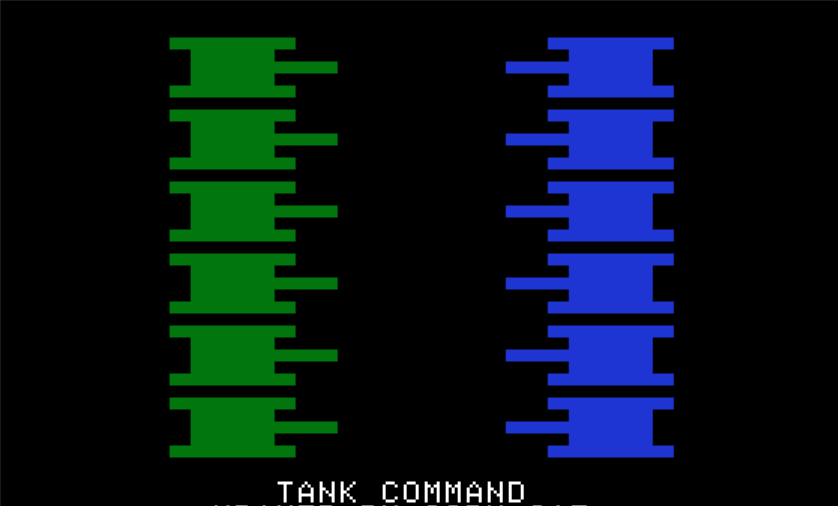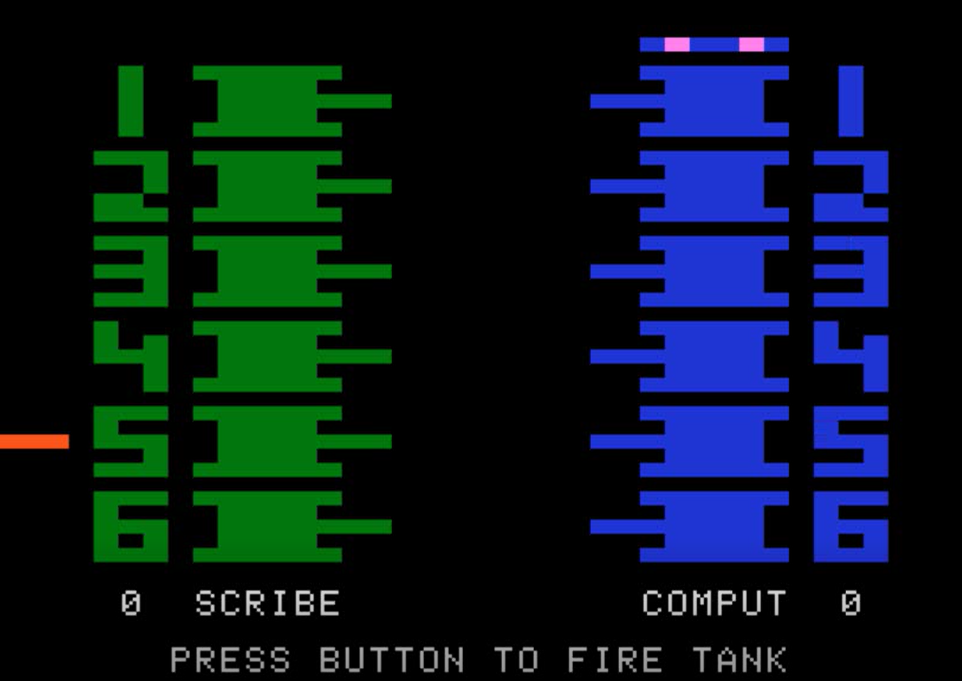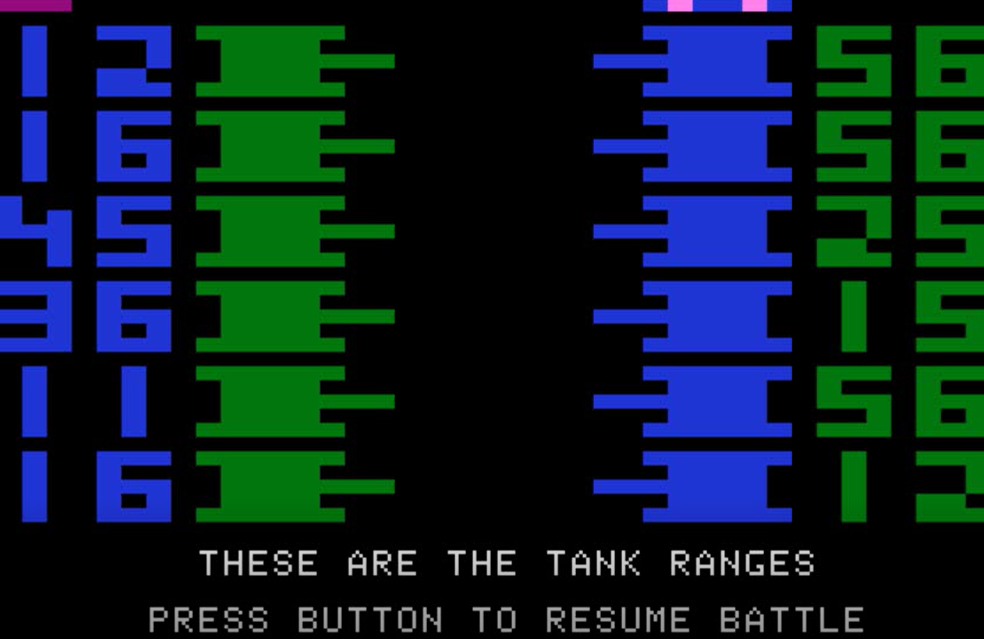[Apple II, Brøderbund]

Edited 27/06/2022 with new information from Doug Carlston’s book
At the beginning of this blog, as I covered Doug Carlston’s Galactic Saga, I deferred to the Digital Antiquarian for the early history of Brøderbund. There isn’t a more compelling account on how two broke brothers managed to build in record-time one of the most influential video game publishers of the early 1980s, starting in March 1980 from a modest booth at the West Coast Computer Faire, where they showcased their 3 games : Galactic Empire, Galactic Trader and Galactic Revolution.
But history is an endless Rashomon. According to Softtalk, at the West Coast Computer Faire, Brøderbund actually brought 4 games made by 3 brothers in total :
The brothers [Doug & Gary] were in full gear in time for the 1980 West Coast Computer Faire. They took a microbooth to display their three TRS-80 programs in the Saga series, as well as a lo-res Tank Command written by their brother Don”.
In November 1981 when Softtalk runs its article on Brøderbund, Donal Carlston and his Tank Command were already almost footnotes in the then-short history of the company. As the history of Brøderbund got longer and longer, later retellings omit them for the sake of brevity ; after all Tank Command never made it into a Brøderbund catalogue and Don did not participate in Brøderbund’s operations as he was an associate professor at the University of Iowa. But it is turn-by-turn, and about destroying enemy tanks, so I had to check it out.

The game starts with 2 groups of 6 tanks facing each other.

The objective is to reach a threshold in points (that I set at 20 for the AAR, the default is 100) after a certain number of rounds. Rounds last until all tanks on one side are destroyed or neither side is able to destroy any additional tank (more on this later), at which point the destroyed tanks are replaced and a new round starts.
Destroying tanks in itself does not grant points, points are only earned at the end of a round according to the following rules :
- 5 points if the other team is fully wiped-out,
- 1 point by kill done by the surviving tanks,
In Tank Command, each of your tanks has a random range, which should be understood not as a “military” range but as the list of enemy tanks that can be attacked. This is for instance the starting range in my game – in blue for me and green for the enemy :

My first tank can only shoot at the first and second enemy tank, whereas my second tank can shoot at any of the enemy tanks. The exact target is picked randomly, a shot almost always hits, and for now tanks have only one HP.
Given how ranges are allocated, it follows that :
- If I manage to remove tanks #4 and #6, my first tank will be safe,
- If I remove tanks #3 and #4, my own tanks #3 and #4 will be safe,
Fortunately, my 4th tank has 75% chance of progressing toward one of these objectives at its first shot !
Unfortunately, it hits that one tank I did not care about, and it is destroyed at the first enemy move :

And soon after that, my tanks #2 and #6 are destroyed, which means I cannot destroy enemy tanks #3 and #6 anymore.

I am crushed in the first round, losing all my tanks (5 points) and giving 5 more points to my opponent as their tank #3 racked 3 kills and their tank #6 racked 2 kills.

The second round begins :

Unfortunately, the God of Random Number Generators is not kind to me. These are the ranges at the beginning of the round, can you guess how the round will end :

Really, try to guess !
I can’t attack the last enemy tank, and only one of my tanks can aim at the first enemy tank. On the other hand, my own first tank is out of reach of the enemy, so the very predictable result of the round is the following :

The bottom enemy tanks racked 4 kills now, and the other one 2. The score is now 16 to 1. I can still turn this around, maybe ?
But when I see the start of the following round, I know I have lost – none of my tanks can hit the last slot, where the computer is sitting on a tank that will give it 4 points.

And expectedly :

That’s all there is to say about the game.
The 1981 Apple II/III Software Directory claims that the game is “based on the strategic wargame program that tied up the nation-wide PLATO system in the mid-70’s. [It was] originally devised by a graduate student at a Big Ten University to study complex probability systems.” That “graduate student” seems to have been Don himself, at least according to Doug Carlson in his 1985 book Software People: Inside the Computer Business :
[Don] had originally created Tank Command for the Plato education system and had later converted it for the Apple. His game and my three TRS-80 programs were Brøderbund’s entire software line, and at the Faire, Gary and I had high hopes of selling many copies of all four programs in no time.
Tank Command evidently lacked ambition and breadth, and I suppose the Carlston brothers quickly understood it was not in their interest to weaken their personal brand by showing it. Doug Carlston never mentions the game again in his book, it was never in the Brøderbund catalogue and only made a brief appearance in the Summer 1980 and the Fall 1980 Adventure International catalogues. For comparison, the Galactic Saga TRS-80 games were part of the Adventure International catalogues until late 1982.

But Tank Command played a decisive if indirect role in the success of Brøderbund. The Digital Antiquarian explains how in the March 1980 Faire the brothers became acquainted with a representative from Star Craft, which would a few months later let them distribute Apple Galaxian in the U.S. Apple Galaxian instantly became the first Brøderbund best-seller and allowed the company to finally take-off. But how did the brothers meet the Star Craft folks ? Doug Carlston explains :
“Our long-standing relationship with Japanese software companies started because the fellow [one called Jack, another Mioshi] in the booth next to ours didn’t have an Apple. […] Mioshi had also brought to the Faire a couple of Apple arcade-type games that he had picked up in Tokyo from a company called Star Craft.
Since there was no Apple in their booth to demonstrate the games, [they] asked if we wanted to show the games in our booth. […] These were the first fact-action arcade games I’d ever seen on a personal computer. They were light years beyond anything I’d ever seen on the U.S. market so far. We played them ourselves because they were so tantalizing. Even though they weren’ even our products, the Japanese games turned us on so much that we began pulling people out of the crowd to try them. But this became frustrating when everybody wanted to buy the games that weren’t ours to sell in the first place. And Mioshi himself had brought only one copy of each game!”
Mioshi would come back later in the year with more than one copy of each game, and this was the beginning of a long profitable relationship with Star Craft. But why did the Carlston have this fateful Apple II in their booth? It was just there to showcase Tank Command.
If everything goes according to plan, the next 1983 game I’ll cover is one with vastly greater ambitions – it will even be in the title !